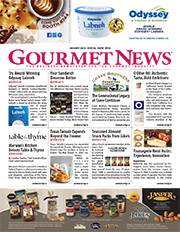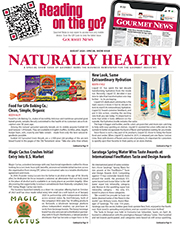Seafood Products Debut in Red Lobster Frozen Food Line
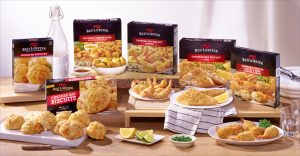 Red Lobster is bringing the heat, and seafood, to the frozen aisle with the launch of its first line of Red Lobster frozen food seafood products available at retail. Inspired by craveable guest favorites, the new Red Lobster frozen food retail entrées include Cheddar Bay Biscuit Shrimp, which combines the Cheddar Bay Biscuit with sweet, succulent shrimp, and Coconut Shrimp Bites, both making it easier than ever to enjoy delicious seafood whenever the craving hits.
Red Lobster is bringing the heat, and seafood, to the frozen aisle with the launch of its first line of Red Lobster frozen food seafood products available at retail. Inspired by craveable guest favorites, the new Red Lobster frozen food retail entrées include Cheddar Bay Biscuit Shrimp, which combines the Cheddar Bay Biscuit with sweet, succulent shrimp, and Coconut Shrimp Bites, both making it easier than ever to enjoy delicious seafood whenever the craving hits.
A quick and convenient dinner, the perfect party appetizer or a reliable late-night shrimpy snack, the lineup of new seafood products builds on the existing retail line of Cheddar Bay Biscuit offerings and features:
- CHEDDAR BAY BISCUIT SHRIMP – What happens when warm, buttery Cheddar Bay Biscuits and tender, crispy shrimp collide? You get NEW Cheddar Bay Biscuit Shrimp. It’s impossible to eat just one!
- COCONUT SHRIMP BITES – These bite-sized goodies are slightly sweet, perfectly crunchy and dangerously delicious. The Coconut Shrimp Bites are tossed in real shredded coconut and paired with the Sweet Chili Sauce.
- CHEDDAR BAY BISCUIT COD – Wild-caught cod breaded with legendary Cheddar Bay Biscuit seasoning makes this like no other fish you’ll ever get from the sea. It’s so easy to make you’ll want it on the weekly dinner rotation.
- PARMESAN CRUSTED GARLIC & HERB STUFFED SHRIMP – Sweet shrimp stuffed with garlic, herbs and cream cheese coated with a parmesan-crusted breading, it’s the perfect bite of shrimp every time. It’s second to yum at every meal.
The new frozen seafood offerings join a lineup of popular biscuit retail products including Red Lobster’s award-winning FROZEN, READY-TO-BAKE CHEDDAR BAY BISCUITS, GLUTEN-FREE CHEDDAR BAY BISCUIT MIX, TRADITIONAL MIX, and HONEY BUTTER BISCUIT MIX. Visit RED LOBSTER AT HOME for recipes and meal inspiration and to find where to catch Red Lobster at Home creations in your local retailer.
Red Lobster is the world’s largest and most-loved seafood restaurant company, headquartered in Orlando, Fla. With a proud heritage and an even brighter future, Red Lobster is focused on serving the highest quality, freshly prepared seafood that is traceable, sustainable and responsibly-sourced. To learn more about Red Lobster’s sourcing standards and where the seafood we serve comes from, please visit WWW.REDLOBSTER.COM/SEAFOODWITHSTANDARDS.
For more news of interest to the frozen food industry, subscribe to Gourmet News.
Toshiba to Showcase ‘YOUnifying Experiences’ at NGA
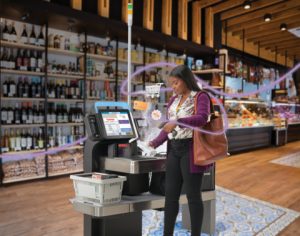 Toshiba Global Commerce Solutions will be exhibiting its “YOUnifying Experiences” at The NGA Show 2023 from Feb. 26-28 at Caesars FORUM Convention Center in Las Vegas. The company will showcase its best-in-class portfolio of solutions at booth #1339 demonstrating how retailers can provide personalized interactions with shoppers and improve their operations.
Toshiba Global Commerce Solutions will be exhibiting its “YOUnifying Experiences” at The NGA Show 2023 from Feb. 26-28 at Caesars FORUM Convention Center in Las Vegas. The company will showcase its best-in-class portfolio of solutions at booth #1339 demonstrating how retailers can provide personalized interactions with shoppers and improve their operations.
As the grocery landscape continues to evolve, retailers must embrace a “unified commerce” approach to succeed. A study conducted by Incisiv and Toshiba revealed that self-checkout technology is now a staple in the industry with 94 percent of grocers currently offering or planning to offer self-checkout options in stores. Consumer interest in buy online pick up in store continues to grow, requiring retailers to adjust across digital and brick-and-mortar channels to unify experiences and make lasting consumer relationships.
“It is critical for retailers to have the freedom to accelerate and meet the demands of consumers to drive retention and loyalty in an authentic way,” said Rance Poehler, president and CEO of Toshiba Global Commerce Solutions. “We provide a full ecosystem of resources for retailers that includes hardware, self-service and software solutions like our ELERA™ Commerce Platform. Our robust partner network also plays a vital role in connecting us with retailers across various segments to provide tailored technology solutions that meet their unique needs.”
Toshiba’s partner and independent software vendor LOC Software (booth #1725) will showcase first-time demonstrations of their LOC Store Management Suite software integrated with Toshiba’s self-service software running on the Pro-X Hybrid Kiosk. The fully integrated combined solution presents grocery retailers with features that address their unique demands across service and convenience for their shoppers. Both companies will showcase the fully integrated joint solution in their booths during the show.
“We’re excited that LOC Software successfully completed testing with Toshiba’s CHEC software application on the Pro-X Hybrid Kiosk. The new software integration and hardware solution creates new offerings and opportunities to empower retailers to meet the evolving demands of their industry,” said Guy Leger, VP of sales and marketing at LOC Software. “Our joint presence at NGA will show participants how we are partnering to create solutions that enable grocers to deliver a fully connected platform that links stores, customers, and data.”
Toshiba’s NGA booth will feature the technology that empowers retailers with unified commerce solutions to connect with consumers and meet the changing needs of the grocery and retail food industries. The Hardware Bar will feature live demos of Toshiba‘s TCx line of rugged point-of-sale solutions that have been rigorously tested to ensure performance and durability for grocery. The ELERA Commerce Platform and its suite of solutions accelerate digital transformation, supporting the connected store experience in an agile, interconnected, and infinitely adaptable way.
The booth will also spotlight self-service options like Pro-X Hybrid Kiosk and the industry-leading Self Checkout System 7 offering innovative computer-vision based produce recognition, loss prevention features, and more.
The Incisiv research presented key findings and analysis from a study of 135+ retail executives. The study was designed to understand retailers’ outlook and attitude towards Unified Commerce as an enabler of key growth strategies. For more information on Incisiv’s 2022 State of the Industry “Unified Commerce in Food & Grocery,” visit here.
For more news of interest to the grocery industry, subscribe to Gourmet News.
Americans Think Grocery Store Profits, Inflation Higher than Reality
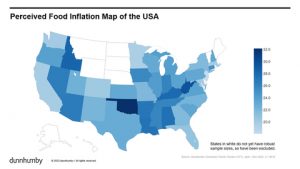 Americans believe that grocery store profits are at a 35.2 percent net profit margin, 14 times higher than grocers’ actual net profit margin average of 2.5 percent, and that food-at-home inflation is 24.3 percent, double the annual rate reported by the U.S. Bureau of Labor Statistics according to the latest dunnhumby Consumer Trends Tracker. The CTT is part of the dunnhumby Quarterly, a strategic market analysis of key retail themes, with the third edition being focused on navigating uncertainty.
Americans believe that grocery store profits are at a 35.2 percent net profit margin, 14 times higher than grocers’ actual net profit margin average of 2.5 percent, and that food-at-home inflation is 24.3 percent, double the annual rate reported by the U.S. Bureau of Labor Statistics according to the latest dunnhumby Consumer Trends Tracker. The CTT is part of the dunnhumby Quarterly, a strategic market analysis of key retail themes, with the third edition being focused on navigating uncertainty.
n the third wave of the CTT, dunnhumby also found that despite perceived inflation reaching a new high, customers are coping a little better compared to the last wave of the report. Consumers who reported they would have difficulty covering an unexpected expense of $400 dropped from 64 peercent in July to 60 percent in November 2022. In addition, 48% of consumers reported they are getting the kind of food they want to eat compared to 43 percent in the second wave.
“In this latest wave of our CTT study, we found that retailers are in a precarious position with their brand perception, since customers are vastly over-estimating grocers’ store profit margins and inflation rates, while they themselves are battling food prices,” said Matt O’Grady, president of the Americas, dunnhumby. “Retailers need to show they are empathetic to customers through their prices, their rewards/loyalty offers, and with messaging to best support shoppers during these challenging financial times.”
Key findings from the study:
- Inflation worries are driving customer sentiment. When consumers were asked as part of the survey, why customer sentiment is the lowest it has been in 50 years, consumers responded by a five to one margin that inflation was the cause, with covid coming in a distant second. When asked about 2023, only 22 percent of respondents predicted inflation and the state of the country will get better. Forty-seven percent of respondents predicted inflation and the state of the country would improve three years from now. Over a five-year period, 54 percent of consumers are optimistic that their own finances and the state of the country will improve.
- Younger shoppers are most optimistic, but only in the short term. For 2023, 31 percent of consumers aged 18-34, believe their finances and the state of the country will get better, compared to just 13 percent of consumers over 65. Over a three and five-year timeframe however, there were no significant differences by age.
- Food insecurity remains a problem. Thirty-one percent of households reported they have skipped or reduced the size of a meal for financial reasons. Thirty-nine percent of respondents under the age of 44 have skipped or reduced meal sizes. And households with children at home are 8 percent more likely than adult-only households to have skipped or reduced meal sizes. Consumers living in Idaho, Oklahoma, Arkansas, Tennessee, and West Virginia reported the highest numbers, where over 40 percent had skipped or reduced the size of a meal in the last year. Consumers living in Washington, Minnesota, Michigan, Massachusetts, and Maryland reported the lowest numbers, with approximately 20 percent having skipped or reduced the size of a meal in the last year.
- While improving slightly, most consumers continue to struggle financially. No state is immune, but the states with the highest rate of financial insecurity (75 percent) are Oregon, Oklahoma, Louisiana, and West Virginia. The states with the lowest rates of financial insecurity (45 percent) are Minnesota, Wisconsin, Maryland and Delaware.
- Consumers want easy to shop and more convenient eCommerce solutions. Eighty-one percent (up 4 percent) of consumers say easy to shop websites and apps are important to them and 78 percent (up 4 percent) want retailers to have more convenient delivery and pick up time slots. For consumers aged 55 and over, ease and convenience are even more important. In this age group, 84 percent say easy to shop websites and apps are important to them and 81 percent want convenient delivery/pick-up time slots available. Families are 16 percent more likely to interact with a store’s app and have a 10 percent greater need for the retailer to pick products as well as they would, compared to shoppers without children.
- Consumers want retailers to help them make healthy choices. Forty-four percent of consumers reported it was very or extremely important for retailers to help them make healthy choices, an increase of 3 percent from the previous wave. In addition, 48 percent reported they choose healthy foods while shopping (up 2 percent), 40 percent read diet and nutrition information (up 2 percent) and 29 percent are buying products for a specific diet when they shop. The top five diets in the U.S. cited in the survey are 1) Keto, 2) Low carb, 3) Low sugar, 4) Vegetarian, and 5) Gluten free.
For this study, dunnhumby interviewed 6,012 consumers, representative of the U.S. grocery shopper nationwide. The online interviews for Wave 1 were conducted in April 2022, Wave 2 in July 2022, and Wave 3 in November 2022. Approximately 2000 individuals were interviewed for each Wave of the study.
The CTT study is designed to uncover shopper needs, perceptions and behavior over time, and to complement dunnhumby’s Retailer Preference Index which measures the strength of retailers’ customer value proposition. The dunnhumby Consumer Trends Tracker can be accessed today.
For more news of interest to the grocery industry, subscribe to Gourmet News.

